Should You Worry About The Future of the U.S. Dollar?
Posted on — Leave a commentThe U.S. dollar is under fire from multiple fronts – and that increases the importance of investing in tangible assets like gold bullion more than ever before.
The U.S. dollar is being devalued at home – by our own government that is printing new money and expanding the money supply at a historic pace. And, it is under threat on the world stage.
It’s no secret for years China and Russia have been making moves to dethrone the U.S. dollar from its pedestal as the world’s reserve currency.
A quick refresher: the U.S. dollar is highly sought after from nations around the world for a simple reason: most international trade is conducted in U.S. dollars. In fact, the dollar is used in 88% of all foreign-exchange trades world-wide, according to 2019 Bank for International Settlements data.
“Companies in places like Argentina can export goods to Turkey, and get paid in dollars. Because those dollars are deposited in local banks, they can be lent to companies. In fact, because there are so many dollar deposits, it’s actually cheaper for overseas businesses to borrow in the U.S. currency, creating a feedback loop that maintains the greenback’s pre-eminence,” the Wall Street Journal explained.
Not everyone is happy with the U.S. dollar’s top dog status.
In 2019, China decided to begin cutting the U.S. dollar out of its crude oil trading with Russia. Instead, they began buying and selling crude oil in yuan.
Why does this matter? It’s the demand for U.S. dollars that is the key to our delicate house of cards.
As the United States continues to spend beyond its means – with a historic, record-high national debt of $28.2 trillion and counting, our nation must finance that debt through the sale of Treasury bonds. Other nations, for now, are willing to buy Treasury bonds and finance our debt – because they need to traffic in U.S. dollars for international trade. That allows us to finance our unrelenting debt at a low interest rate for now.
Comparing fiat currencies to tangible assets, the U.S. government can never print gold. And, gold is not attached to any government liabilities or debt.
Now, imagine if the U.S. dollar was no longer the reserve currency. And, other countries were no longer interested in buying our government bonds. Interest rates would surge in order to attract willing foreign buyers, and even that might not be enough. And, gold would skyrocket to new all-time highs if the U.S. dollar were to lose its pre-eminence on the world stage.
Today, the lightning speed shift to digital currencies creates a new and potentially more worrisome threat to the U.S. dollar.
More than 85% of central banks around the world are currently investigating digital versions of their currencies. China has already launched a pilot version of its e-yuan. Sweden is developing its e-krona and is expected to be the world’s first cashless nation by 2023.
The move to digital currencies is coming, whether you are ready for it or not.
How does it work? The Bahamas created a digital currency called the Sand Dollar. You load it onto a mobile wallet on your smartphone. Want to buy a beer? Simply scan a QR code.
Who will win the race for digital currency dominance? China certainly has a good head start. The United States doesn’t even have a prototype yet. The Boston Fed is expected to release some research this summer on a prototype system, but this is just research. Chinese citizens are already buying and selling in an e-yuan pilot program.
What could this mean for the role of the U.S. dollar as the reserve currency?
Nations would no longer need physical dollars to conduct their transactions.
A digital currency could displace the U.S. dollar as the global reserve currency.
The result could be a sweeping change in the international financial system. International chaos could lie ahead, the Bank of England’s Mark Carney warned in a 2019 Jackson Hole monetary policy summit. When the U.S. dollar overtook the U.K’s sterling as the world’s dominant reserve currency in the early 20th century, the backdrop was economic upheaval and a world war that decimated Europe.
“History teaches that the transition to a new global reserve currency may not proceed smoothly,” Carney said.
While fiat currencies like the dollar will suffer in this scenario, gold historically climbs sharply during periods of war, international tensions and financial market instability. Gold is the classic safe-haven investment that has withstood the test of time.
What does this mean for you?
Most American investors largely invest in U.S. dollar denominated assets like savings accounts, CDs, U.S. stocks and bonds. All those paper assets are denominated in U.S. dollars.
With inflation rising, international threats to the U.S. dollar’s global dominance looming, and the future of the U.S. dollar being called into question, investing in alternative currencies like gold is a proven way to diversify your portfolio and protect and grow your wealth.
Remember, the U.S. government can never print gold. And, gold is not attached to any government liabilities or debt.
Gold is money, pure and simple, and it is recognized in every country around the globe. Gold is a true international currency.
Our generation is likely to see a destabilization of the U.S. dollar as the world’s reserve currency. The digital currency movement is growing fast and it could well be a digital currency that dethrones the U.S. dollar.
When that occurs do you want the majority of your assets tied up in a weak, fiat currency?
It is a rationale concern to question the future of the U.S. dollar – and fortunately there is a solution – increase your allocation to tangible assets like gold.
More than ever it makes sense to buy and own tangible assets like gold bullion. Unsure how much is appropriate for you? Talk to a Blanchard portfolio manager and we can walk you through a process to determine the amount that is right for you.
Gold has been used as money since around 550 BC. No matter the developments in the digital currency realm, even in the year 2051 and 2071– gold will be recognized as money. You can take that to the vault.
Want to read more? Subscribe to the Blanchard Newsletter and get our tales from the vault, our favorite stories from around the world and the latest tangible assets news delivered to your inbox weekly.
Gold Jumps to 7-Week High as Inflation Rears its Ugly Head
Posted on — Leave a commentGold climbed to a seven-week high this week – boosted by weakness in the stock market, signs that inflation is emerging in the U.S. and amid strong demand from India and China for physical bullion.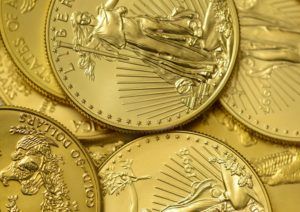
The short-term trend turned positive for gold last week as the yellow metal climbed above its 50-day moving average – a bullish investing signal that confirms the end of the recent pullback in gold prices.
Short-term gold target
Looking higher, precious metals investors are targeting near-term gold gains to $1,825 an ounce – which represents a technical chart objective based off the March lows.
Big picture supports long-term gold gains
The macroeconomic picture remains positive for gold as inflation data is coming in hotter than economists expected, which supports a gold move back to the all-time highs above the $2,000 level hit last summer.
What’s brewing now? In March, the consumer price index jumped 2.6% from a year ago levels, the Department of Labor reported last week.
We’ve been warning about the inflation seeds the government has been planting for a while now. Get ready. It’s starting to heat up – and once inflation boils – it is hard to contain without crashing the economy.
It turns out that JP Morgan Chase chief executive Jamie Dimon is deeply concerned about the future of America.
While Dimon expects a boom from pent up demand, there is a chance that a rise in inflation will be “more than temporary,” forcing the Federal Reserve to raise interest rates aggressively.
What’s more? “Rapidly raising interest rates to offset an overheating economy is a typical cause of a recession,” Dimon wrote in his recent letter to shareholders.
Dimon compared the Covid-19 crisis to past difficult periods for our country, Dimon said that we have always bounced back stronger as a nation.
“In each case, America’s might and resiliency strengthened our position in the world, particularly in relation to our major international competitors,” Dimon said. “This time may be different.”
Here’s another way to look at the inflation problem.
In 2020, the U.S. Treasury created 23.6% of all U.S. dollars that are in existence. The government printed gobs and gobs of money in its efforts to flood the country with liquidity during the Covid crisis.
And, you wonder why the U.S. dollar is going down?
The Fed has put all its chips on the table and is gambling with our future. The Fed risks that inflation will not only pick up – but get out of control.
The next economic shock is brewing and it is an inflation crisis.
The remedy for hyperinflation is painful indeed. What can we learn from history? In the late 1970’s and early 1980’s inflation hit 14% and mortgage rates spiked as high as 20%.
In a classic article in Fortune magazine in 1977, legendary investor Warren Buffett stated his views on inflation:
“The arithmetic makes it plain that inflation is a far more devastating tax than anything that has been enacted by our legislatures. The inflation tax has a fantastic ability to simply consume capital. … If you feel you can dance in and out of securities in a way that defeats the inflation tax, I would like to be your broker — but not your partner.”
Stock performance during high inflation
The 1970’s are considered a lost decade for the stock performance.
From 1972 to 1973 when inflation spiked rapidly to more than 6%, the S&P 500 crashed 40%.
Between 1970 and 1979, the Dow Jones industrial average gained just 4.8 percent. That’s right…not even a 5% return over nine years!
Gold climbed 2328% in the 1970s!
Gold, a classic inflation hedge, began the 1970s at $35 an ounce. In January 1980, gold skyrocketed to a then record high at $850 an ounce – as mortgage rates touched 20%.
Always be thinking about tomorrow, especially when the pace of change picks up.
The inflation data is picking up fast. The warning bells of inflation are ringing.
The tide is turning bullish for gold again.
Momentum is picking up for gold bulls as the U.S. stock market stumbles, the U.S. dollar weakened steadily throughout April and the price of bitcoin dropped as well.
If you want to protect your assets from a falling dollar and rising inflation, increase your allocation to gold now – before the price goes up even more.
Act now to lock in today’s low prices!
Want to read more? Subscribe to the Blanchard Newsletter and get our tales from the vault, our favorite stories from around the world and the latest tangible assets news delivered to your inbox weekly.
1937-D Buffalo Nickel – 3 Legs
Posted on — 2 CommentsIn early 1902, President Theodore Roosevelt made it a priority to update and improve the look of U.S. coinage. However, there were constraints that prevented even the president from getting what he wanted. An earlier 1890 act of Congress made it a requirement that all U.S coins remain in circulation for 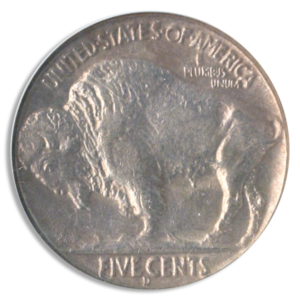 a minimum of 25 years before they became eligible for a redesign. However, within the verbiage of that act was a path forward for the president; Congress was empowered to authorize a change which would allow for an exception to the rule. As a result, the five-cent and the silver dollar pieces both became exception cases.
a minimum of 25 years before they became eligible for a redesign. However, within the verbiage of that act was a path forward for the president; Congress was empowered to authorize a change which would allow for an exception to the rule. As a result, the five-cent and the silver dollar pieces both became exception cases.
The Mint began seeking new designs for the nickel. American sculptor James Earle Fraser advocated for a new look, with one side of the nickel featuring a Native American, and the other a bison. In addition to this imagery, it was decided early in the process that the design would be free of any elements that were not required. Therefore, the words “In God We Trust” were omitted from the coin.
The Mint issued the first coins to Native American chiefs. Then in early March 1913, the coins were released into circulation. The design earned early praise for expressing imagery that is uniquely American. Some, like the New York Times criticized the way in which the design would quickly deteriorate as it flowed through the natural course of circulation. Despite these comments, the coin enjoyed a massive issuance in the tens of millions of pieces.
As with any coin distributed in such numbers, there were some unforeseen problems, one of which has become infamously known as the 1937-D “three-legged” nickel. In this version, one of the buffalo’s legs is missing. The error was a result of alterations made to the die used in the Denver Mint. The pressman was attempting to clean portions of the reverse die that had resulted in both dies coming in repeated contact with one another. The unintended result of this work was that one leg was nearly erased from the die.
Officials did not notice the mistake until the coin had already been struck thousands of times. Many of the three-legged pieces found their way into circulation before production was halted. As expected, collectors were intrigued and, to this day, seek this error version of the coin.
In the years since the die error, the Buffalo Nickel has enjoyed a legendary status for both the uniqueness of the missing leg and its rarity. The image of a Native American remains one of the most powerful characteristics of the coin due, in large part to the work and detail Fraser put into the piece. In fact, this coin was the last one to feature a Native American until the Sacagawea dollar minted in 2000. In previous remarks Fraser noted that the profile of the Native American on the coin was a composite of Iron Tail of the Ogala Lakota, and Two Moons of the Cheyenne.
The coin is 75% copper and 25% nickel and was minted from 1913 to 1938.
Want to read more? Subscribe to the Blanchard Newsletter and get our tales from the vault, our favorite stories from around the world and the latest tangible assets news delivered to your inbox weekly.
World’s Largest Memorial to Confederate Leaders
Posted on — Leave a commentSince the days of the ancient Greeks and the Romans, commemorative coins have been popular as they honored important historical events.
The 1925 Stone Mountain Silver Half Dollar is a prime example.
America’s largest Confederate Memorial is carved 42 feet deep and 400 feet above the ground on the side of a huge granite mountain in Georgia. It features three great Civil War generals: President Jefferson Davis and Generals Robert E. Lee and Thomas J. “Stonewall” Jackson, all sitting astride their favorite horses.
How did this dramatic and historic monument come to be?
In 1915, Mrs. C. Helen Plane, a member of the United Daughters of the Confederacy, spearheaded the drive to create the grand memorial. She chose the American sculptor Gutzon Borglum to create the massive monument. Borglum later became famous for his colossal sculpture at Mount Rushmore.
Before beginning the project, Borglum famously said: “The Confederacy furnished the story, God furnished the mountain. If I can furnish the craftsmanship and you will furnish the financial support, then we will put there something before which the world will stand amazed.”
Funds were sorely needed to support this grand undertaking,
The Stone Mountain Confederate Monumental Association decided to raise funds for the project via a commemorative coin.
With support from President Calvin Coolidge, a bill passed on March 17th, 1924 authorizing the creation of silver half dollars to commemorate the soldiers of the South.
Borglum created the models for this stunning silver half dollar coin which was struck in 1925 at the Philadelphia Mint.
The obverse of the 1925 Stone Mountain silver half dollar features Generals Robert E. Lee and Stonewall Jackson on horseback.
Around the top is the motto IN GOD WE TRUST. Below on the left is STONE MOUNTAIN 1925.
The reverse reveals a stoic and imposing eagle perched on a rock with his wings outstretched. Above the eagle you can see the words: UNITED STATES OF AMERICA and E PLURIBUS UNUM. To the Eagle’s left is the inscription MEMORIAL TO THE VALOR OF THE SOLDIER OF THE SOUTH. LIBERTY and HALF DOLLAR are seen below.
A total of 1,314,709 Stone Mountain silver half dollars were distributed. They were offered above face value at $1.00 each.
The gargantuan carving project, which began in 1916, was beset with numerous interruptions and delays. In fact, it wasn’t until 1970 that the historical monument project was actually completed.
Today, over 4 million people visit Stone Mountain Park in Georgia each year to see the largest bas-relief sculpture in the world.
We have just one 1925 Stone Mountain silver half dollar. See this historical gem here.
Want to read more? Subscribe to the Blanchard Newsletter and get our tales from the vault, our favorite stories from around the world and the latest tangible assets news delivered to your inbox weekly.
Maximize Your Finances Ahead of the May 17th IRS Deadline
Posted on — Leave a commentFor two years running now, the IRS gifted taxpayers with extra time to file their income tax returns.
You now have until May 17, 2021 to compile your financial documents, complete your tax return and make contributions to 2020 IRA accounts.
This extra time offers you a valuable opportunity to review your portfolio and diversification strategy.
You probably are familiar with (and most likely already have) a traditional IRA account. This is a useful strategy to grow your retirement funds.
There is a drawback to traditional IRA accounts however. They typically only allow you to invest in paper-based assets like stocks, bonds and mutual funds.
As you know, diversification is essential to reducing portfolio risk as well as maximizing long-term returns.
If you are looking for an opportunity to add an additional layer of diversification into your investment strategy, a self-directed IRA could be right for you.
A self-directed IRA allows you to buy and hold a variety of alternative assets like gold and silver, real estate and even assets like water rights, undeveloped land, livestock, and cryptocurrency.
The IRS contribution limits for a self-directed IRA are the same as a traditional IRA and you will enjoy the same tax advantages. For 2020 contributions (with a set-up deadline of May 17, 2021) that totals $6,000 or $7,000 if you are age 50 or older. The key difference are the types of assets you can buy and hold in a self-directed IRA.
History demonstrates that gold is uncorrelated with the S&P 500. That simply means when the S&P 500 plunges, gold typically moves sharply higher. That makes gold an excellent portfolio risk diversification tool and an ideal investment for a self-directed IRA.
You will need to open an account with an IRS-approved custodian bank to add gold to a IRA. Blanchard has a longstanding relationship with GoldStar Trust Company, but we’ll gladly help you get started with any IRS-approved custodial institution you choose.
You can easily roll over an existing IRA or 401(k) or open a new precious metals IRA.
With a self-directed IRA, you can invest in a wide variety of precious metals including gold, silver, platinum or palladium. However, the IRS has specific criteria your precious metals must meet:
- Gold: .995 fine (Gold American Eagle is the only exception)
- Silver: .999 fine
- Platinum: .9995 fine
- Palladium: .9995 fine
These are examples of gold and silver you can add to a precious metals IRA: 1 oz. American Gold Eagle Coin and a 1 oz. American Gold Buffalo or a 10 oz. or 100 oz. Silver Bar.
See all IRA eligible coins here.
Learn how to get started with a precious metals IRA here. Or, call Blanchard at 1-800-880-4653 and we can answer any questions you may have about this process. You still have time before the May 17th deadline to set up a precious metals IRA for 2020. Get started today!
Want to read more? Subscribe to the Blanchard Newsletter and get our tales from the vault, our favorite stories from around the world and the latest tangible assets news delivered to your inbox weekly.
How To “Fragilize” an Economy
Posted on — Leave a commentThe pandemic appears to be in its third, and final act. It is true that the disease will still be in our lives for some time to come. We will face variants, and the possibility of ongoing annual vaccinations. However, the darkest days of contagion are likely behind us. What remains is an economy on the rebound.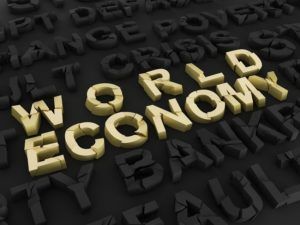
Many economists are anticipating a strong, and prosperous second half to 2021. As recently as mid-March the Federal Reserve raised its forecast for domestic growth in 2021 by more than 50%. As a result, GDP is expected to reach 6.5% this year. If accurate, that figure would be among the highest in recorded history. While these forecasts offer plenty of excitement there is a less discussed and often unseen aspect to the economy today: fragility.
Gregory Daco, chief U.S. economist at Oxford Economics, has explained that the recovery is “fragile.” Part of what makes the US economy fragile today is the fact that many businesses are still struggling to find their way forward. Many companies aggressively pivoted, or even changed their model to accommodate the pandemic setting. Now, as COVID continues to recede, those businesses are determining what aspects of their initial change they want to preserve, and what aspects they want to abandon. Additionally, many businesses were able to stay afloat with borrowing and are facing the considerable cost of repaying those loans. Finally, much of the recovery is due to recent fiscal stimulus which, while critical and necessary, is not sustainable.
This “fragilizing” of the economy, however, is not only the result of the pandemic. These effects have been taking hold for some time and are structural in nature. That is, they are part of moorings that anchor the global economic system. One key factor of the global economy of the recent past and present is that it is characterized by output divergence. The level of output of various economies across the world varies considerably. As a result, the burden of maintaining the health of the global economy is shouldered by fewer and fewer countries.
At the same time, continued globalization means that more countries are discovering that their success and survival are tied to the health of other countries. Simply, what happens “here” is highly contingent on what happened over “there.” The result is a more tenuous and fragile setting.
In such an environment there are many stores of wealth that become increasingly volatile. The value of the dollar is tied heavily to trade imbalances and the threat of inflation. Meanwhile, stock prices are subject to disruptions in the global supply chain that is so necessary to many businesses seeking annual growth.
Weathering the storm of a pandemic has demanded unimaginable resources. Any new, unforeseen threats could take a serious toll as many emergency reserves have been depleted. This aspect of a recovering but extremely fragile economy underscores the importance of storing a portion of personal wealth in assets that have less reliance on today’s increasingly delicate economy. For many the answer is gold which is not as prone to the threat of externalities as other assets and investment instruments.
Capitalizing on a rebound means remembering to gird for the ever-present threat of a new challenge. As Author Nassim Taleb explains “globalized economic systems operate as one. Errors spread and compound.”
This sentiment seems to encapsulate the underpinning of a gold investment strategy because, as former Federal Reserve Chairman Ben Bernanke once explained, “The reason people hold gold is as a protection against what we call tail risk, really, really bad outcomes.”
Want to read more? Subscribe to the Blanchard Newsletter and get our tales from the vault, our favorite stories from around the world and the latest tangible assets news delivered to your inbox weekly.
Sports Trading Cards, Whisky, Vintage Cars – Is there a Bubble in the Collectibles Market?
Posted on — 1 CommentFrenzy. Hysteria. Mania.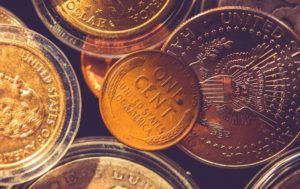
These are some of the words being used to describe the exponential surge in the collectibles market during the COVID-19 pandemic.
Just this month alone, a football trading card featuring Tom Brady sold for a record $1.3 million. And, Christie’s set a record for digital artwork – a breathtaking $69.3 million after bids began at $100.
Online auctions for vintage cars, watches and even limited-edition Nike gym shoes and Pokémon climbed to dizzying high prices during the pandemic. The price of Rolex Day-Dates nearly doubled. In 2020, these watches sold on the secondary for $30,000. Today? They are selling for more than $50,000 on some online sites.
What’s behind this boom in collectibles?
Too much money with few places to spend it.
Governments around the globe increased the amount of money in circulation during the pandemic. And, direct government payments to Americans during the crisis has left many people with excess savings.
Indeed, U.S. bank account deposits climbed to $16.45 trillion – that’s over $3 trillion higher than the level seen in January 2020, according to the Federal Reserve. While millions have been out of work during the COVID crisis, Americans at the upper end of the economic scale have flourished.
There is simply excess liquidity – too much money flowing around the financial system with people looking for places to put it.
Bonds offer negative real interest rates. And the stock market sits at frothy, overvalued levels. Some wealthy investors have turned to more creative, or some even say wacky investments during the pandemic.
In a recent New York Times article: “From Crypto Art to Trading Cards, Investment Manias Abound” Howard Lindzon, a venture capital investor said: “It’s just a pent-up cycle where the money has nowhere to go, so it’s doing stupid things.”
“Most people are cheering, but at the same time, shaking their heads and going, when is the bust coming?” said Jane Leung, the chief investment officer at SVB Private Bank added.
How to recognize a bubble.
There are four conditions needed for an investment bubble to form, according to William Bernstein, author of The Delusions of Crowds. These are: easy credit, new technologies, amnesia about the prior bubble and bust, and the willingness to forego tried and true methods for valuing investments.
Let’s run through the bubble checklist to see where we stand now.
- Easy credit? Yes.
- New technology – electric cars, blockchain, digital art – another yes.
- Amnesia about the last bear market? Last year’s stock market plunge was so short-lived (and historically abnormal) that you can say it doesn’t count. That leaves us going back to the 2007-2009 Global Financial crisis and stock market plunge. That bear market took four and a half years to recover. Remember that? We thought you might not. Another yes.
- Traditional valuation. Umm, just look at Bitcoin, which has zero intrinsic value. Another yes.
Are you looking for an exciting space to expand your alternative investments?
Rare coins and gold bullion could be a good fit for you.
Do you want true value? Unlike sports trading cards, whisky and digital art, central banks around the world invest and hold physical gold for the long term.
In fact, global central banks own more than 30,000 tonnes of gold as part of their monetary reserves. Central banks are the ultimate long-term gold investors – with many holding gold in their vaults for decades.
Here’s what the Dutch National Bank said about gold in 2019:
“Gold is the perfect piggy bank – it’s the anchor of trust for the financial system. A bar of gold always retains its value, crisis or no crisis. This creates a sense of security.”
Tangible assets like gold and rare coins are a recognized store of value and a secure investment that has delivered double digit returns in recent years.
Want exciting? Check out this 1854 $3 Gold Piece or an 1857 $1 gold nugget rescued from the SS Central America shipwreck. Or nothing says stability and security like a 1 kilo gold bar.
Some wealthy investors are chasing a collectibles markets that may go bust. Don’t get caught with a safe full of Pokémon cards or a Rolex watch you never wear when the collectibles bubble pops.
Want to read more? Subscribe to the Blanchard Newsletter and get our tales from the vault, our favorite stories from around the world and the latest tangible assets news delivered to your inbox weekly.
What “Money-In-Hand” Numbers Mean for Gold
Posted on — 2 CommentsAmericans have accelerated the accumulating of liquid cash more than ever. The M2 money supply, sometimes called the “M2 money stock” is at its highest point in recorded history. Moreover, the figure has risen at a near vertical ascent since the start of 2020. As the Wall Street Journal reports, the M2 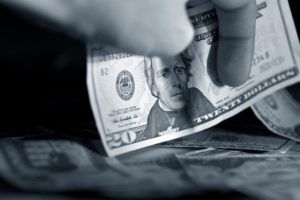 “has increased by an astonishing $4 trillion. That’s a one-year increase of 26%—the largest annual percentage increase since 1943.”
“has increased by an astonishing $4 trillion. That’s a one-year increase of 26%—the largest annual percentage increase since 1943.”
The M2 money supply is a measure of physical currency, demand deposits, negotiable order of withdraw accounts, and travelers’ checks (called the M1 money supply) and “near money” which includes less liquid assets like savings accounts, money market accounts, and certificates of deposit.
The massive growth of the M2 money supply is due to several factors. First, the U.S. has increased their purchasing of Treasuries and mortgage-backed securities. These purchases have added to individual accounts. The second factor is a similar increase in activity from commercial banks. Since the beginning of the COVID pandemic these transactions have added a total of approximately $1 trillion to M2. Third, U.S. companies initiated a dramatic drawdown of $800 billion in credit lines to help weather the pandemic. However, much of this activity occurred between February and April of last year. In recent months corporate bank borrowing has decreased “leaving a net $300 billion increase,” according to reporting from the Wall Street Journal.
The question some gold investors might have is “why does this matter?” One answer can be seen from data published by the World Gold Council which shows that “gold has been more effective in keeping up with global money supply over the past decade.” This relationship is one that we have discussed previously at Blanchard when we explained that “In 2011, gold reached a historic high of $1,900 an ounce just as the M2 money supply surged above 10 percent on a year-over-year basis.” The same Wall Street Journal reporting referenced above concluded that the M2 money supply is expected to increase by another $2.3 trillion in 2021 which will translate into a 12% increase in the total “even without any new lending or further purchases of securities by banks.” Simply, the rise of the M2 money supply likely bodes well for the value of gold.
This dynamic is poised to intensify as more American’s begin receiving their stimulus checks. More money will be in hand among a populace that has already added to their cash holding considerably over the last twelve months. The personal savings rate reached 20.5% in January which is a meaningful increase over the 13.4% seen in December of 2020. In the meantime, more investors are looking for ways to grow their wealth as fixed income assets continue to underwhelm. Additionally, as the Federal Reserve continues to take an aggressive stance towards monetary policy the value of the dollar is coming into question as money floods the system. In this kind of setting more investors seek reliable stores of value for their cash and gold enjoys new life.
Want to read more? Subscribe to the Blanchard Newsletter and get our tales from the vault, our favorite stories from around the world and the latest tangible assets news delivered to your inbox weekly.
The Peculiar Appeal of the Three-Cent Piece
Posted on — 2 CommentsBy 1851, postage rates in the United States dropped from five cents to just three. This decrease complicated issues for most citizens, because payment for mailing a letter could not be made with a single coin. As a result the United States Mint made a decision to issue a new coin with a three-cent  denomination, making it easier to pay for postage.
denomination, making it easier to pay for postage.
The U.S. Mint decided to mint two coins for this purpose. The first was a three-cent silver piece, the other was a three-cent nickel. The composition of the three-cent silver piece was set at 75% silver and 25% copper. This balance accomplished two objectives…first, the silver content established the value of the piece and second, the copper content discouraged individuals from collecting the coins with the intention to melt them.
The pragmatic appeal of the coins extended beyond easy postage payments; it was also designed to be lightweight and therefore more manageable. At just 0.8 grams, the piece remains the lightest weight coin ever issued by the United States. The diameter is less than that of dimes in circulation today. The small size and lightweight earned the coin the nickname “fish scales.”
Moreover, the weight dropped further when the coin was minted to a weight of 0.75 grams by reducing its thickness while simultaneously boosting the silver content to 90% in an effort to get more people to start using the coin.
The design of the three-cent silver piece was practical with a Roman numeral III on the reverse making it easy to quickly identify. The obverse showed a shield on a six-pointed star. In contrast, the obverse of the three-cent nickel featured the profile of Liberty. This 1865 version of the coin was in response to coin hoarding due to silver shortages during the Civil War. The nickel version of the three-cent piece consisted of 75% copper and 25% nickel. However, the purpose of the three-cent nickel began to diminish as hoarding came to an end and postage rates dropped to two cents.
For the entirety of the minting, all three-cent coins came from Philadelphia except for the 1851-O, minted in New Orleans. Minting figures vary considerably across the 38 years of the coin’s life. For example, the 1885 three-cent nickel was only minted in a quantity of 1,000 pieces. Over 18 million pieces of the 1852 three-cent silver piece were minted. The lifetime of the coin was far greater than ever intended.
Today, the 1868 date coins are especially sought-after given their relative scarcity, particularly with a grade above MS64. For example, some collectors will spend between $10,000 and $50,000 for an MS67 or MS68. The rarest is likely the 1852 Inverted 1 three-cent coin. Many experts estimate that only five or six of these exist.
Want to read more? Subscribe to the Blanchard Newsletter and get our tales from the vault, our favorite stories from around the world and the latest tangible assets news delivered to your inbox weekly.
An Often Overlooked Benefit of Precious Metals Investing
Posted on — 1 CommentPrivacy. It’s a fashionable buzzword today – and almost a quaint concept.
The breathtaking advances in technology continue to chip away and erode privacy.
Yet some Americans – especially younger people, have less concerns about the digital footprint that we leave behind with every internet search, text or even your exact geographical location every minute of the day (which is tracked by the location services feature on your cell phone).
Baby Boomers are very concerned (47%) about data privacy use on cell phones versus only 28% and 29% of Gen Z and Millennials, respectively, according to Statista.
You may be wondering – how does privacy relate to money and precious metals investing?
The answer is simple. National digital currency.
From Sweden’s e-krona to the Bahama’s Sand Dollar – more than 60 countries have experimented with national digital currencies over the past year, according to the Bank for International Settlements.
Some see a dark side to the emerging national digital currency technology.
Last year China began testing its digital currency in cities like Shenzhen, Suzhou and Xiongan. Chinese citizens invited to try out the electronic yuan received a link they could click on to get a balance of 200 e-yuan – which was then displayed in their bank app.
To spend the money, Chinese citizens scanned a store’s QR code, or gave a QR code to a retailer to scan.
Consider this.
- The digital currency expired in a few weeks.
- They could only spend the e-yuan within city limits and at select stores.
Can you imagine if your money had an expiration date? And, you could only spend it within certain geographical borders or at specific places?
“The development of a hyper-centralized digital yuan would also create the world’s largest repository of financial transactions data, allowing the authoritarian Communist Party of China unprecedented access to ramp up surveillance of ordinary citizens,” Akram Keram, a Chinese expert at the National Endowment for Democracy wrote earlier this month in a Washington Post article.
Going Cashless?
The goal of the digital yuan is to replace cash used in everyday commerce.
Over 750 million people in China bought goods online last year. Goldman Sachs estimates that digital yuan could be used by 1 billion people in the 10 years.
One of the advantages of using paper money and coins is anonymity.
Even for law abiding citizens, it could be unsettling to know that a government is tracking (and controlling) every dollar or yuan that you spend.
The digital yuan “would give the Chinese Communist Party something that no government has ever had in history: The ability to monitor in real time the minute financial dealings of its citizens,” said Yaya J. Fanusie, an Adjunct Senior Fellow at Center for New American Security and the author of a new report on China’s digital currency.
“The privacy concerns arise largely from the massive amount of insight a CBDC [central bank digital currency] would give Chinese authorities into its users’ financial data and behavior, as well as information about anyone who interacts with those users – including, potentially, American citizens,” Benjamin Powers wrote in a recent Coindesk article.
Governments could also just cut you off from your digital money.
“In a digital-yuan-consumed society, the government easily could suspend the digital wallets of dissidents and human rights activists,” Keram wrote.
China is leading the world in the push to take its currency digital. The country already ranks and blacklists citizens as part of its social credit system and digital currency could easily be connected to that system.
That’s why diversification into tangible assets offers an often overlooked benefit – extreme privacy.
Precious Metals and Rare Coin Ownership is Private
One of the many benefits of diversification into physical precious metals is discreet and private wealth accumulation and transfer. Gold bullion and rare coins are easily transportable and not tracked by any financial institution or government.
For estate planning purposes, with rare coins and precious metals, you can split your wealth among your heirs evenly, or in whatever proportions you prefer.
You can preserve your wealth in a way that is portable, secure, and private.
Many precious metals investors choose to store their investments in a fireproof home or business safe or a bank safe deposit box.
International Storage Options
For the ultimate in privacy, some investors turn to the International Depository Services (IDS) of Canada, a precious metals depository in Toronto. Assets are stored here in an international personal custody account, which is off depository balance sheets and beyond the reach of the U.S. government.
Another option is the Strategic Wealth Preservation Storage Facility. The SWP is a precious metals storage facility located in the Cayman Islands. Independently owned and operated, this non-financial institution is the closest off shore storage option for North American investors seeking to internationalize their hard assets.
The Bottom Line
Advances in digital currency are coming. While you can’t change or stop these developments, when you invest in tangible assets like gold bullion and rare coins you get additional peace of mind that a portion of your assets are private.
Want to read more? Subscribe to the Blanchard Newsletter and get our tales from the vault, our favorite stories from around the world and the latest tangible assets news delivered to your inbox weekly.








